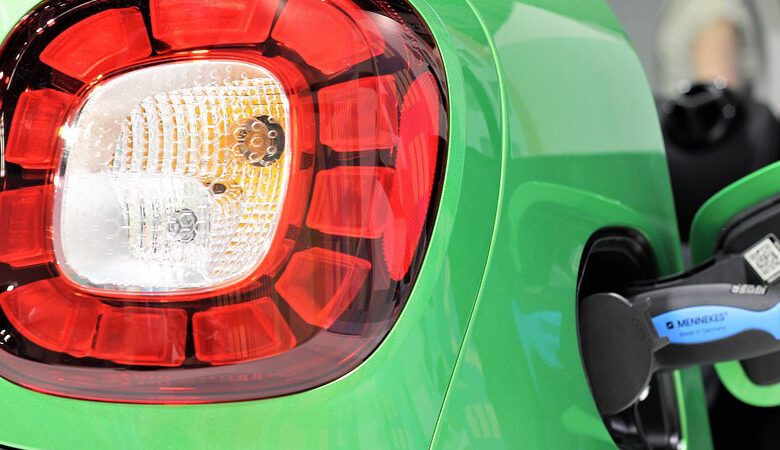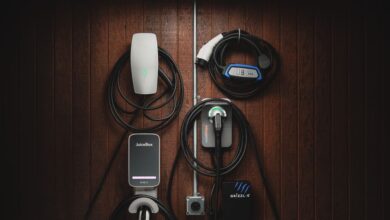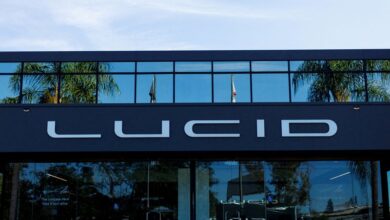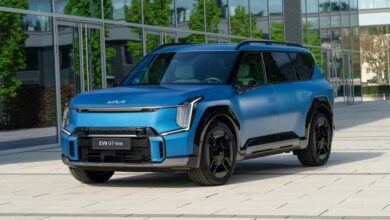Moderation Needed In China’s EV Industry Policy Subsidies – Analysis – Eurasia Review

By Kung Chan and Xia Ri
The International Energy Agency (IEA) released a report predicting that the surging demand for electric vehicles (EVs) in the next decade will reshape the global automotive industry and significantly reduce oil consumption in road transportation. If charging infrastructure keeps pace, it is estimated that by 2035, EVs will represent 50% of global car sales, surpassing this year’s figure by over one-fifth, reaching 17 million units. IEA Executive Director Fatih Birol stated that recent negative news about the slowdown in the adoption of EVs is not in line with the global positive trend. These data do not indicate any reversal in the growth of EVs, suggesting that their global sales are growing extremely strongly. Despite the optimistic trend, EVs manufacturers are struggling to cope with thin profit margins and are facing price wars due to intensified competition. Over the past few days, Tesla and Chinese carmaker NIO have lowered the prices of key models in China, the world’s largest EV market, and Tesla has also lowered prices in Germany and the U.S.
It is widely known that new energy vehicles (NEVs) in China have enjoyed substantial and long-term policy subsidies. Since 2009, the Chinese government has provided financial support for the promotion and application of NEVs. By 2022, the Chinese NEV market has benefited from 14 years of subsidies. According to incomplete statistics from the first 12 years, China has invested approximately RMB 129.5 billion in subsidies, covering over 1.9159 million NEVs. Including the RMB 18.3 billion in pre-allocated funds for 2019-2020 announced by the Ministry of Finance, the total cumulative subsidies for Chinese NEVs will reach RMB 147.8 billion.
However, what policy effects might result from these long-term government subsidies? ANBOUND’s founder Mr. Kung Chan has long pointed out that some effects of these prolonged subsidies may have been unforeseen by the original policy designers and will ultimately be borne by Chinese taxpayers and debtors. From a rational perspective, it is clear that such policy subsidies should be moderated in the future.
China has strategically created a vast domestic market for NEVs through a combination of restrictive and supportive measures. On one hand, the government has implemented purchase restrictions in major consumer markets, such as Beijing, Shanghai, Guangzhou, Shenzhen, Tianjin, Hangzhou, and Shijiazhuang, to reduce fuel vehicle sales. On the other hand, it has provided land, subsidies, loans, and favorable policies for NEV companies, fostering their growth. This dual approach has led to the rise of new car manufacturers like NIO, Xpeng, and Li Auto, as well as a substantial EV market in China.
From 2005 to 2015, it took a decade for China’s NEV penetration rate to exceed 1%. Between 2016 and 2019, despite the penetration rate rising to 5%, fuel vehicles remained dominant. However, 2020 marked a turning point when China set a goal for NEVs to surpass 50% market penetration by 2035. Following this, the NEV penetration rate surged, reaching 14% in 2021, 27% in 2022, and 33% in 2023.
According to the China Association of Automobile Manufacturers (CAAM), as of early 2024, China’s NEV production and sales reached 9.587 million and 9.495 million units, respectively, representing year-on-year growth of 35.8% and 37.9%. The market share rose to 31.6%, up by 5.9 percentage points from the previous year. Data from the China Passenger Car Association (CPCA) indicates that from April 1 to April 14, 2024, NEV retail and wholesale market shares reached 50.30% and 50.19%, respectively, achieving the 2035 goal 11 years ahead of schedule.
In addition, China’s NEV policy subsidies are not confined to the country alone but extend globally as Chinese EV manufacturers export their products worldwide. Since 2018, China’s automobile exports have achieved leapfrog development, with NEVs becoming a new growth driver. From 2018 to 2022, the compound annual growth rate of NEV exports was 46.58%. According to the CAAM, in 2021, China exported 310,000 NEVs, a year-on-year increase of 3 times, making China the world’s largest exporter of NEVs. In 2022, 679,000 NEVs were exported, a year-on-year increase of 1.2 times. In 2023, NEV exports reached 1,203,000 units, a year-on-year increase of 77.6%.
Among these exports, Europe imported 640,000 pure EVs, accounting for 41.27%, mainly from Belgium, the United Kingdom, Spain, the Netherlands, Germany, and France. Southeast Asia received 310,000 units, accounting for 20.09%, mainly from Thailand and the Philippines. Central Asia-Middle East received 194,000 units vehicles, accounting for 12.57%, mainly from Israel, the UAE, Turkey, Uzbekistan, Kyrgyzstan, and Kazakhstan. South Asia imported 116,000 units, accounting for 7.53%. South America imported 72,000 units, accounting for 4.65%, mainly from Brazil and Mexico. Therefore, the beneficiaries of China’s policy subsidies are spread worldwide. Essentially, China is subsidizing the entire global NEV market.
Finally, low-price strategy might lead to an increasing number of automotive industry disputes. In the realm of market competition, the so-called “low price” of Chinese EVs directly triggers subsidy competition among various countries. The U.S., Europe, Japan, and South Korea have introduced policies to support NEVs through purchase subsidies and investment grants. The U.S. provides a USD 7,500 tax credit for NEVs, while EU countries offer subsidies ranging from EUR 2,000 to 9,000. Simultaneously, the EU’s Battery Regulation introduces new requirements such as carbon footprint and battery passports, and from 2023, the EU has initiated an anti-subsidy investigation into Chinese NEVs. It has also issued regulations requiring customs to register imported EVs from China, with the potential for retroactive tariffs on these vehicles.
The American Inflation Reduction Act stipulates localization production requirements, and during her recent visit to China, U.S. Treasury Secretary Janet Yellen criticized the “overcapacity” of Chinese NEV products. The U.S. is also preparing to conduct anti-subsidy or national security risk investigations on Chinese EVs. France’s new EV subsidy regulations exclude Chinese NEVs from eligibility, and Turkey’s new regulations require companies exporting EVs to Turkey to have at least 140 authorized service stations distributed evenly across the country. These measures clearly target Chinese NEVs, indicating that the international environment for exporting NEVs is becoming more complex and challenging for China.
Final analysis conclusion:
As is well known, new energy vehicles (NEVs) in China have long benefited from substantial policy subsidies, leading to outcomes that the original policymakers could not have anticipated. Firstly, through a combination of incentives and restrictions, a massive NEV market has been artificially created in China. Secondly, as products are exported, these subsidies extend across the global NEV market. Thirdly, the low-price strategy may increasingly trigger automotive industry disputes. Therefore, China should moderate its NEV policy subsidies in the face of the current challenges.
About the authors:
- Kung Chan, founder of ANBOUND, an independent think tank.
- Xia Ri is an Industry Researcher at ANBOUND, an independent think tank.



